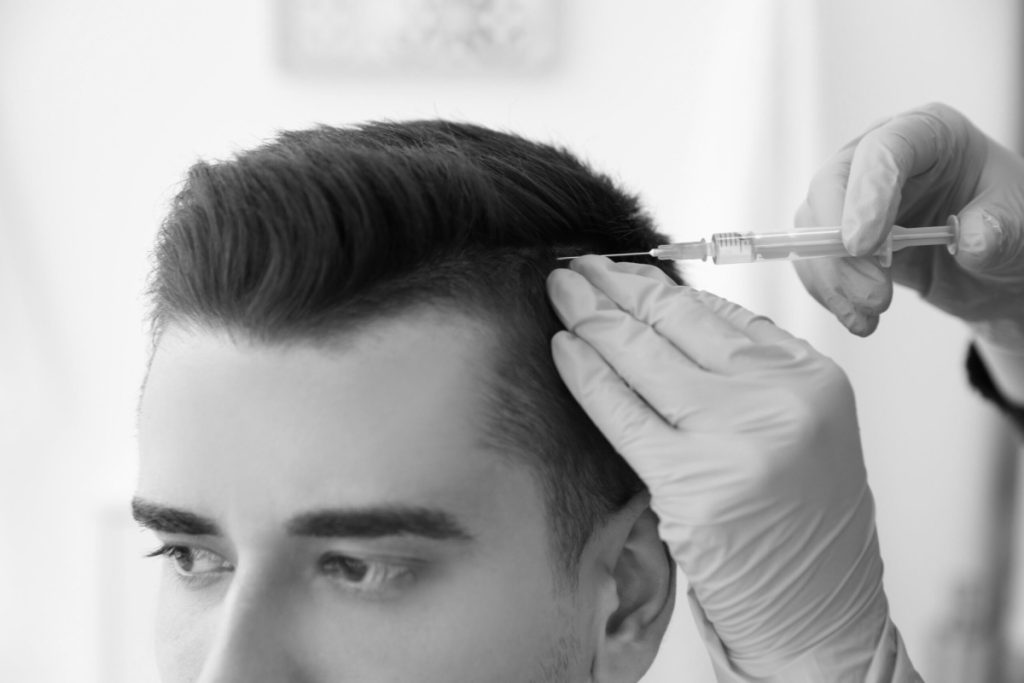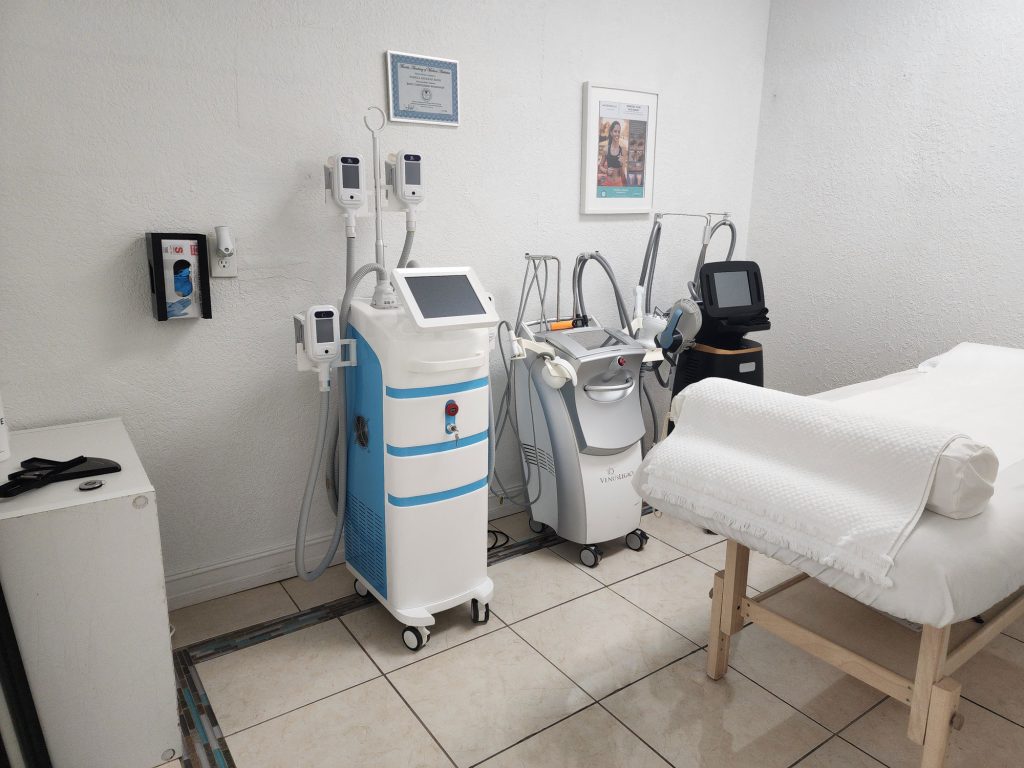¡Ahorra un 15% en tu primer servicio! Obtén una consulta gratuita
Permanent Hair Reduction: The Ultimate Guide to Long-Lasting Results
Permanent hair reduction is a highly effective method for achieving smooth, hair-free skin that lasts much longer than traditional hair removal techniques. This advanced treatment uses targeted light energy to damage hair follicles, resulting in a significant decrease in hair growth over time. While complete and permanent hair removal is not guaranteed, many people experience long-lasting results with minimal maintenance required.
Table of Contents
Key Takeaways:
- Permanent hair reduction uses light energy to damage hair follicles
- Results can last for months or years with proper treatment
- Multiple sessions are usually needed for optimal results
- Works best on dark hair and light skin, but new technologies are expanding the options
- Laser and IPL are the most common methods used
- Professional treatments are more effective than at-home devices
- Side effects are usually mild and temporary
- Cost varies but can be more economical long term compared to other hair removal methods
Understanding Permanent Hair Reduction

Permanent hair reduction is a cosmetic procedure that aims to significantly decrease hair growth in targeted areas of the body. Unlike temporary hair removal methods like shaving or waxing, this treatment targets the hair follicles themselves to inhibit future growth.
How it works
The process uses concentrated light energy, typically from a laser or intense pulsed light (IPL) device. This light is absorbed by the pigment in the hair, which then heats up and damages the follicle. The goal is to prevent the follicle from producing new hair.
Permanence vs. reduction
It’s important to note that while the term “permanent” is often used, complete and lifelong hair removal is not guaranteed. Most people experience a significant reduction in hair growth, with any regrowth being finer and lighter. Periodic maintenance treatments may be needed to maintain results.
Types of Permanent Hair Reduction Treatments
There are several methods available for permanent hair reduction, each with its advantages and considerations.
Laser hair removal
Laser hair removal is one of the most popular and effective methods. It uses a specific wavelength of light to target hair follicles. This treatment is precise and can cover larger areas quickly.
Intense Pulsed Light (IPL)
IPL uses a broad spectrum of light wavelengths. While it can be effective for hair reduction, it’s also used for other skin treatments. IPL may be less precise than laser but can be gentler on the skin.
Electrolysis
While not light-based, electrolysis is another method of permanent hair reduction. It uses an electric current to damage individual hair follicles. This method can be more time-consuming but is effective for all hair colors.
Preparing for Permanent Hair Reduction

Proper preparation can help ensure the best possible results from your treatment.
Consultation
Before starting treatment, it’s crucial to have a consultation with a qualified professional. They can assess your skin and hair type, discuss your goals, and determine the best treatment plan.
Pre-treatment care
In the weeks leading up to your treatment:
– Avoid sun exposure and tanning
– Stop plucking, waxing, or using hair removal creams
– Shave the treatment area 24-48 hours before your appointment
The Treatment Process
Understanding what to expect during your permanent hair reduction sessions can help you feel more comfortable and prepared.
Duration and frequency
Most people need 6-8 initial treatments spaced 4-6 weeks apart. Each session typically lasts 15-60 minutes, depending on the size of the treatment area.
What to expect during treatment
During the procedure, you’ll wear protective eyewear. The practitioner will apply a cooling gel to your skin and use a handheld device to deliver light pulses to the treatment area. You may feel a sensation similar to a rubber band snapping against your skin.
Post-treatment care
After your session, you may experience some redness and swelling, similar to a mild sunburn. These effects usually subside within a few hours. Your practitioner will provide specific aftercare instructions, which may include:
– Avoiding sun exposure
– Using gentle skincare products
– Applying cool compresses if needed
Effectiveness and Results
The effectiveness of permanent hair reduction can vary based on several factors.
Factors affecting results
- Hair color and thickness: Darker, coarser hair typically responds best to treatment
- Skin tone: Treatments are most effective on light skin with dark hair, but new technologies are expanding options for darker skin tones
- Treatment area: Some body parts respond better than others
- Hormonal factors: Hormonal changes can affect hair growth and treatment results
Timeline for visible results
Most people start to see a reduction in hair growth after 2-3 treatments. However, optimal results usually require a full series of treatments and may take several months to achieve.
Long-term maintenance
While many people experience long-lasting hair reduction, some may need occasional touch-up treatments to maintain results. These are typically needed once or twice a year.
Safety and Side Effects
When performed by a qualified professional, permanent hair reduction is generally safe with minimal side effects.
Common side effects
- Temporary redness and swelling
- Mild discomfort during treatment
- Slight changes in skin pigmentation (usually temporary)
Rare complications
In rare cases, more serious side effects can occur, such as:
– Blistering or scarring
– Excessive hair growth in treated areas
– Eye injury (if proper protection is not used)
Minimizing risks
To reduce the risk of complications:
– Choose a reputable provider with proper training and certification
– Follow all pre and post-treatment instructions carefully
– Be honest about your medical history and any medications you’re taking
Comparing Permanent Hair Reduction to Other Methods
To understand the benefits of permanent hair reduction, it’s helpful to compare it to other hair removal methods.
Traditional hair removal methods
| Method | Pros | Cons |
|---|---|---|
| Shaving | Quick, inexpensive | Short-lasting, risk of cuts and ingrown hairs |
| Waxing | Lasts 3-6 weeks | Painful, risk of skin irritation |
| Depilatory creams | Easy to use, painless | Short-lasting, potential skin reactions |
Permanent hair reduction
| Pros | Cons |
|---|---|
| Long-lasting results | Higher upfront cost |
| Reduces ingrown hairs | Multiple treatments required |
| Smoother skin | Not suitable for all hair/skin types |
| Time-saving in the long run | Potential for mild side effects |
Cost Considerations
The cost of permanent hair reduction can vary widely based on several factors.
Factors affecting cost
- Treatment area size
- Number of sessions needed
- Geographic location
- Provider’s experience and reputation
Average costs
While prices can vary, here are some general price ranges for common treatment areas:
- Upper lip: $100-$300 per session
- Underarms: $150-$450 per session
- Bikini area: $200-$500 per session
- Full legs: $600-$900 per session
Long-term value
While the upfront cost of permanent hair reduction may seem high, it can be more economical in the long run compared to ongoing expenses for other hair removal methods.
Choosing a Provider
Selecting the right provider is crucial for safe and effective permanent hair reduction.
Qualifications to look for
- Proper licensing and certification
- Specific training in laser or IPL treatments
- Experience with your skin and hair type
Questions to ask
When consulting with potential providers, consider asking:
– How many treatments will I need?
– What type of technology do you use?
– What results can I realistically expect?
– How do you handle any potential complications?
Red flags to watch out for
Be cautious of providers who:
– Offer unusually low prices
– Promise complete and permanent hair removal
– Don’t require a consultation before treatment
– Can’t or won’t answer your questions thoroughly
At-home Permanent Hair Reduction Devices
For those looking for a more convenient option, at-home permanent hair reduction devices are available.
Pros and cons of at-home devices
Pros:
– More convenient
– Lower long-term cost
– Privacy of treatment at home
Cons:
– Less powerful than professional treatments
-It may take longer to see results
– Higher risk of user error
Effectiveness compared to professional treatments
While at-home devices can be effective, they typically produce slower and less dramatic results compared to professional treatments. They may be best suited for touch-ups or maintenance between professional sessions.
Permanent Hair Reduction for Different Skin and Hair Types
Advancements in technology have made permanent hair reduction more accessible for a wider range of skin and hair types.
Light skin with dark hair
This combination typically responds best to treatment and may see results more quickly.
Dark skin tones
Newer technologies have made treatment safer and more effective for darker skin tones. However, special precautions may be needed to avoid pigmentation changes.
Light or gray hair
These hair colors contain less pigment and may not respond as well to light-based treatments. Electrolysis may be a better option in these cases.
Permanent Hair Reduction for Men
While often associated with women, permanent hair reduction is becoming increasingly popular among men.
Common treatment areas for men
- Back and shoulders
- Chest
- Neck (to reduce ingrown hairs from shaving)
- Arms and legs
Considerations for male hair removal
Men often have coarser, denser hair, which may require more treatments or higher energy settings. The hormone testosterone can also stimulate new hair growth, potentially affecting long-term results.
Myths and Misconceptions about Permanent Hair Reduction
There are several common misunderstandings about permanent hair reduction that are worth addressing.
It’s completely permanent
While results can be long-lasting, some hair regrowth is normal, and touch-up treatments may be needed.
It’s painful
Most people describe the sensation as mild discomfort rather than pain. Modern devices often include cooling features to minimize discomfort.
It’s only for women
Permanent hair reduction is effective and popular for both men and women.
It causes cancer
There’s no evidence that the light used in these treatments causes cancer. The light doesn’t penetrate beyond the skin’s surface.
The Future of Permanent Hair Reduction

As technology continues to advance, we can expect to see improvements in permanent hair reduction treatments.
Emerging technologies
New lasers and light-based devices are being developed to treat a wider range of skin and hair types more effectively.
Personalized treatments
Advancements in AI and machine learning may lead to more personalized treatment plans based on individual skin and hair characteristics.
Increased accessibility
As technology improves and becomes more widely available, treatments may become more affordable and accessible to a broader range of people.
Conclusion
Permanent hair reduction offers a long-lasting solution for unwanted hair, providing smoother skin and freedom from frequent hair removal routines. While it requires an initial investment of time and money, many find the long-term benefits well worth it.
As with any cosmetic procedure, it’s important to have realistic expectations and choose a qualified provider. With proper treatment and care, permanent hair reduction can provide satisfying results for years to come.
For more information or to book an appointment, visit our website o call us. Our dedicated team is here to support your journey and overall well-being.
